“It is not the material worn, but the judicious choice of colors, which indicates the true lady.”
~Color in Dress, 1841
Victorians were nothing if not prescriptive. They were (in general) also very concerned with aesthetics and beauty. The overlap of the two created an emphasis on the “rules” of female dress, including discussions about the proper colors to include in one’s wardrobe. This summer I am exploring the various uses of color in Victorian fashion. I last looked at pink in my post: Tickled Pink: color in the Victorian era. Today we are learning about green.
When I began my research I assumed that the use of green would have been more common. Instead, I found much fewer examples of green used, especially for clothing, in the 19th century.
Let’s take a look!
Green: Are you the right complexion?
Did any of you “have your colors done” in the late 1980s? I remember how the trend was all the rage and how my girls’ church group would revel in having a color specialist come to someone’s house to help us determine what colors we should select for our clothes, particularly our tops.
There was an equally strong interest in women’s complexions in the 1800s. Want some proof? Check out my post: Rosy Cheeks: The Victorian Way.
When it came to selecting a color for one’s dress, the fashion manuals of the Victorian era frequently refer to complexion and hair color.
“Of all colors for the dress, Green is most favorable to the Fair Blonde, because it imparts to the delicate flesh white of the complexion a tint of red, forming by union an agreeable rose-color.
“Delicate Green is most suitable, being a good contrast both to the face and hair, especially if the hair be a good contrast both to the face and hair, especially if the hair be golden, or incline toward orange.
~Color in Dress, 1841
“Dark green. Titan has clothed the figures in some of his most famous pictures in a very deep green, but he has taken care to bring large quantities of white against the complexion, and generally has a bright crimson near, to balance the composition.”
~The Art of Dressing Well, 1871
“Outdoor dress: If green is worn, it should be of a dark shade, and relieved by rich, dark furs, Velvet of the richest quality, with mink trimming, is handsome in dark green, but trying to most complexions.”
~The Art of Dressing Well
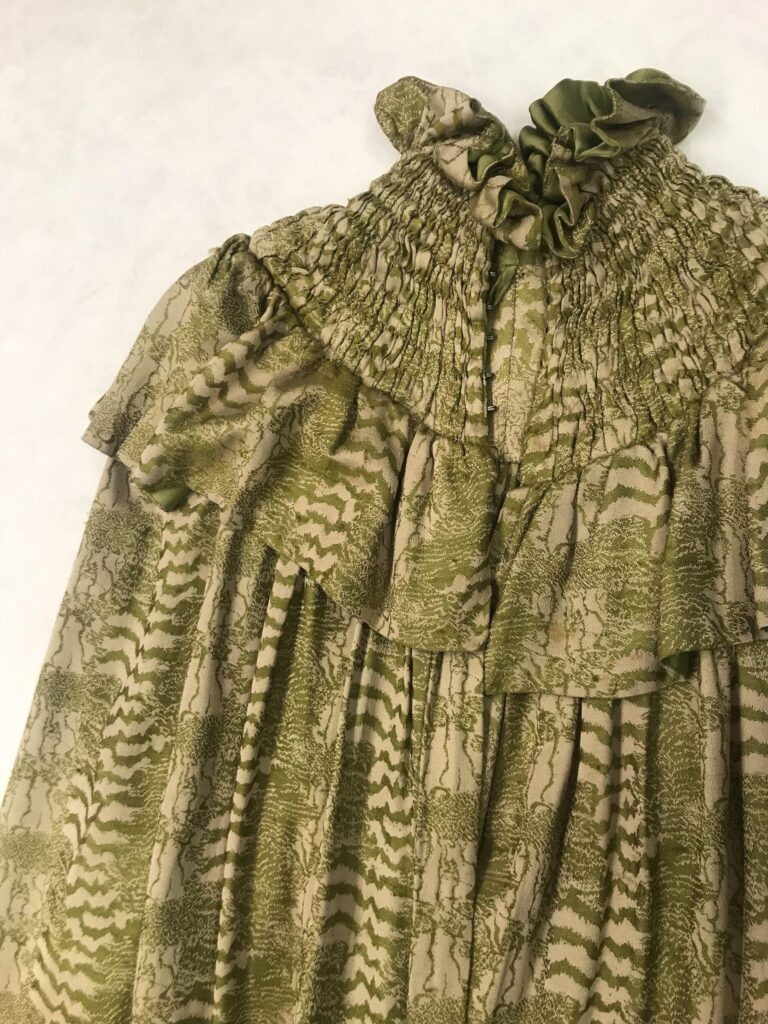
Green dresses
“GREEN in a cool, calm, and refreshing color. It is composed of blues and yellow, and holds a medium station between them. To the human eye there is no color so grateful as green, being a temperate and retiring, as well as a most beautiful and cheerful color.”
~The Art of Dressing Well, 1871
There are many references to green being a good color to blend with other colors. Prevailing, however, was the opinion that it was best used as an accent with white.
“Dark green. Titan has clothed the figures in some of his most famous pictures in a very deep green, but he has taken care to bring large quantities of white against the complexion, and generally has a bright crimson near, to balance the composition.”
~The Art of Dressing Well, 1871
“Light green looks well with white. May be used with small points of a rich brown, or trimmed with a darker shade of the same color, but is an unmanageable color, and very trying to the complexion.” ~The Art of Dressing Well
What do you think of these green and white dresses?
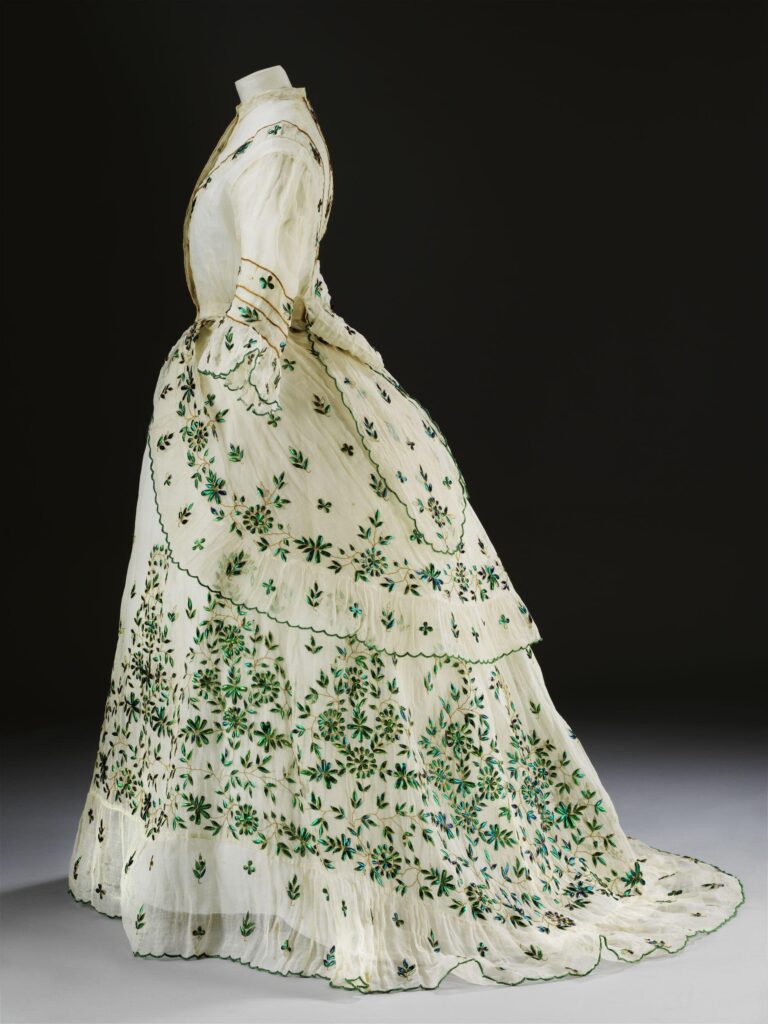
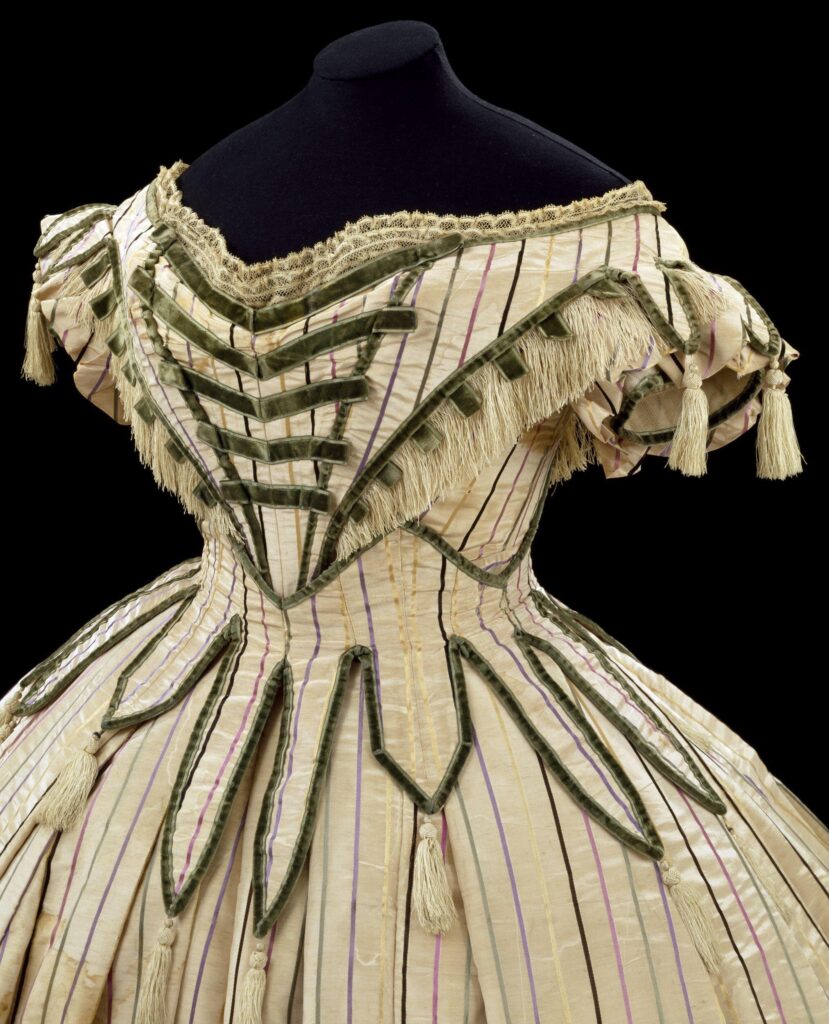
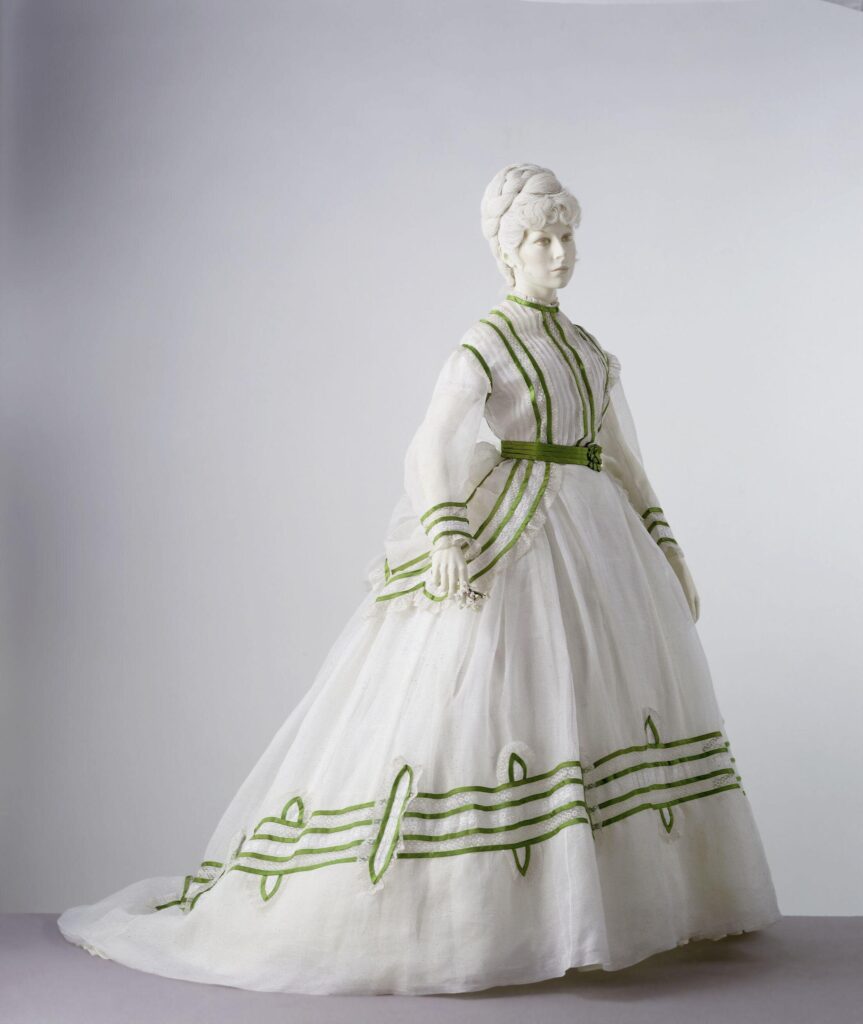
Green combinations
“Green may be associated with shades of itself, but the combination is not effective unless enlivened by other harmonious colors.” ~Color in Dress
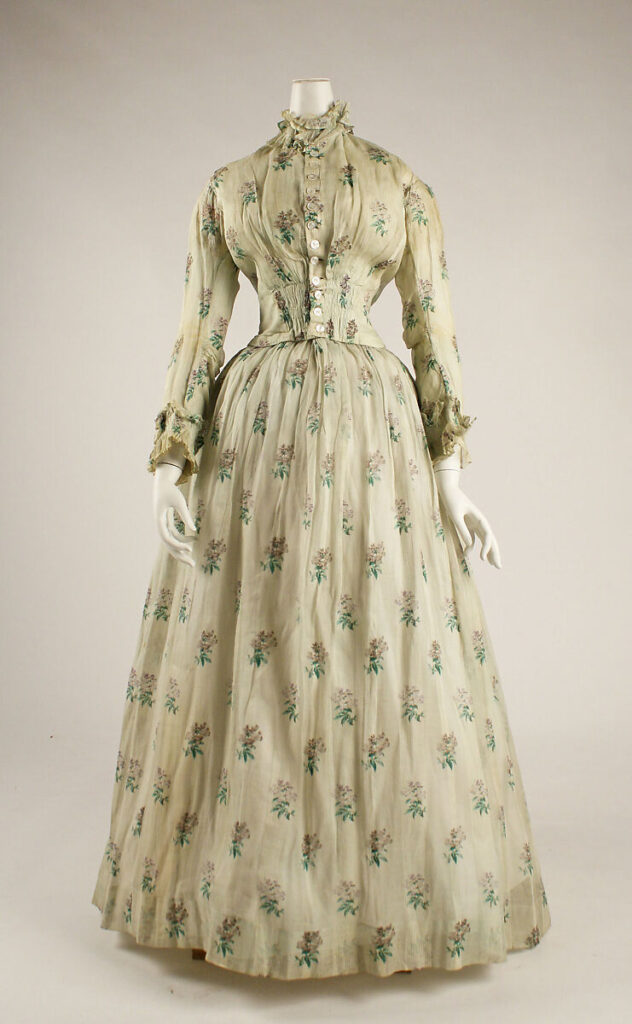
Besides white, green was thought to be a good color to accent with. Says Madame Demorest in the 1878 issue of What to Wear and How to Make It:
“Green, like blue, is capable of much extension, and is now very fashionable, though popular fancy now runs toward advenitious mixtures by which, no infrequently, a purity of tone is encroached upon.”
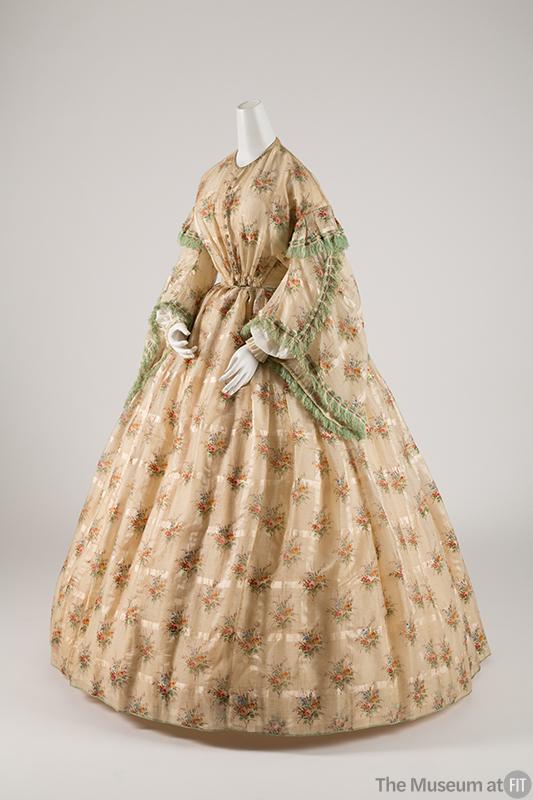
Color in Dress says of the following green combinations:
Green and gold (or gold-color), a rich harmony.
Green and yellow harmonize.
Green and orange harmonize.
Green and scarlet harmonize.
Green, scarlet, and blue harmonize.
Green, crimson, blue, and gold (or yellow) harmonize.
But does that mean that fully-green dresses never made an appearance in the Victorian era? Nope! There are exceptions to every rule.
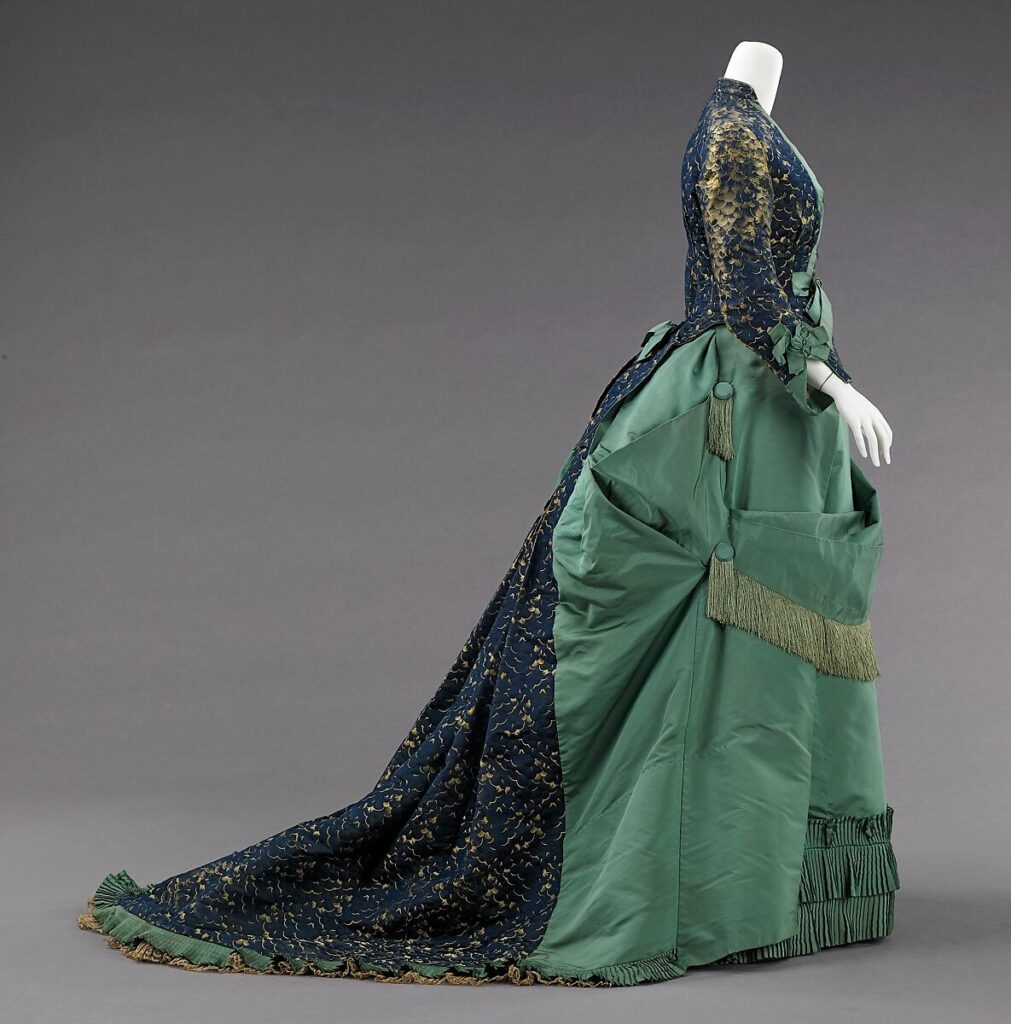
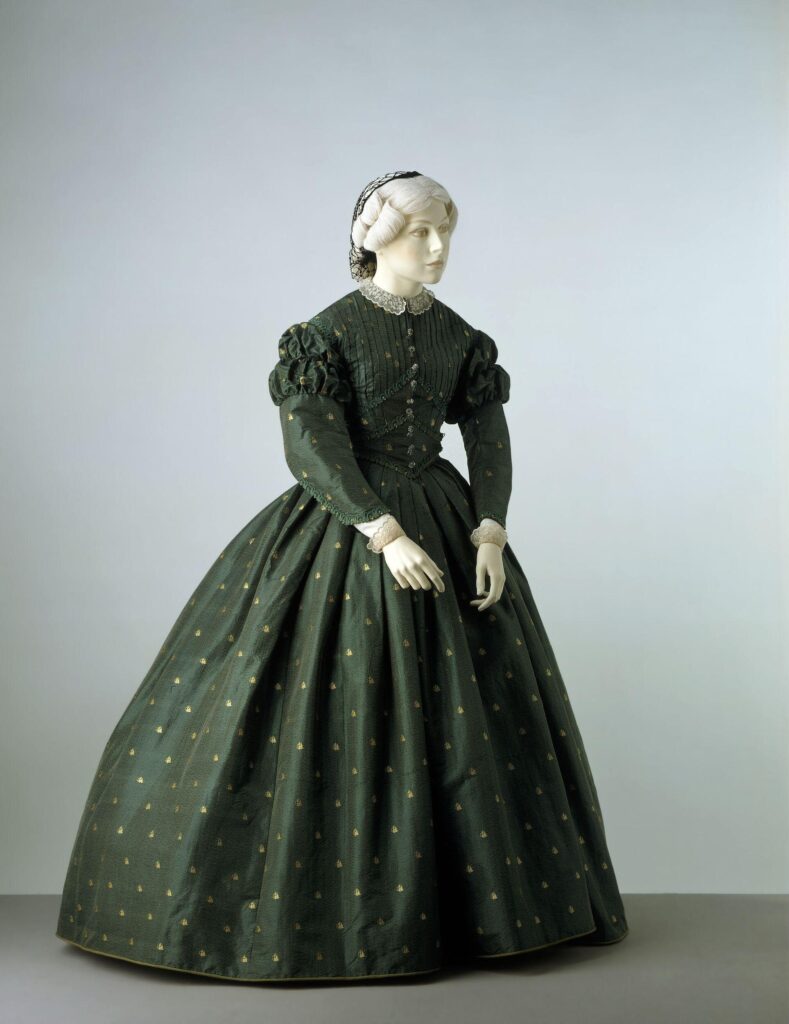
Green accessories
When used in accessories green was mostly seen in jewery, bonnets, and as trim for hats. This use of trim was explored in my previous post about pink, as green paired with pink was thought to be the perfect combination as it mirrored the perfection of nature.
And of course, as the bonnet rested so close to one’s face, great care was to be taken when considering green.
“A Green bonnet is suitable to the Fair Blonde; it may have a small proportion of rose-color in its trimmings associated with white, and a white feather. Too much white, however, with green, produces a cold effect, and therefore does not aid the fair complexion to the desired degree.”
~Color in Dress
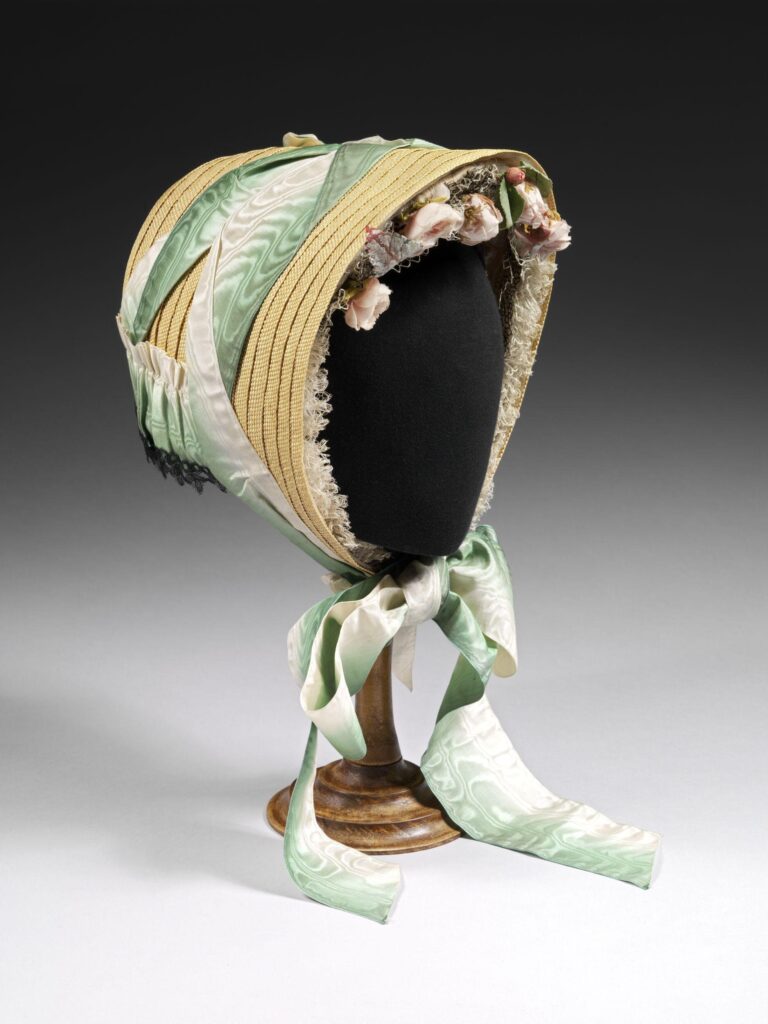
“A Bright Green bonnet is highly suitable to the Ruddy Blonde whose complexion is not overcharged with rose. When highly colored, the effect of the green should be neutralized by the addition of rose, scarlet, orange, or white flowers.”
~Color in Dress
And of course, green was seen in the popularity of emeralds during the Victorian era.
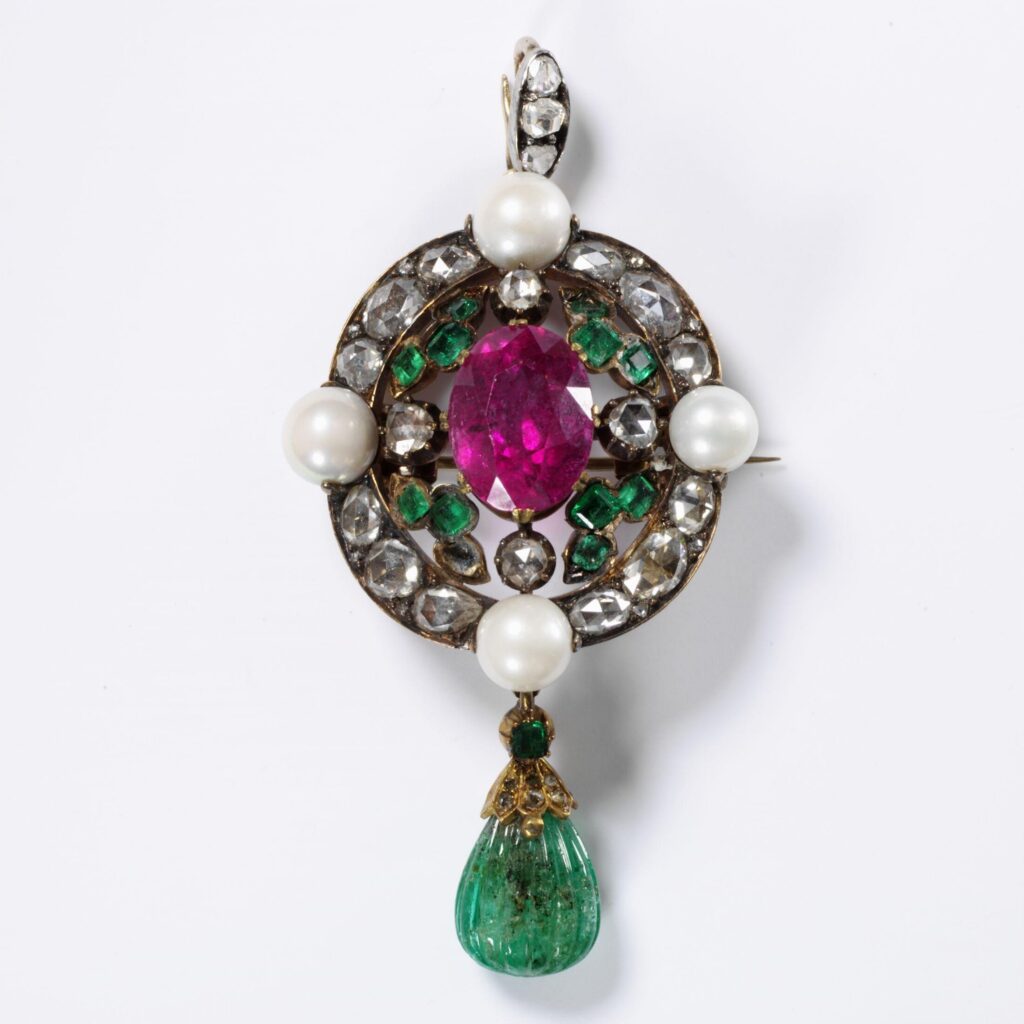
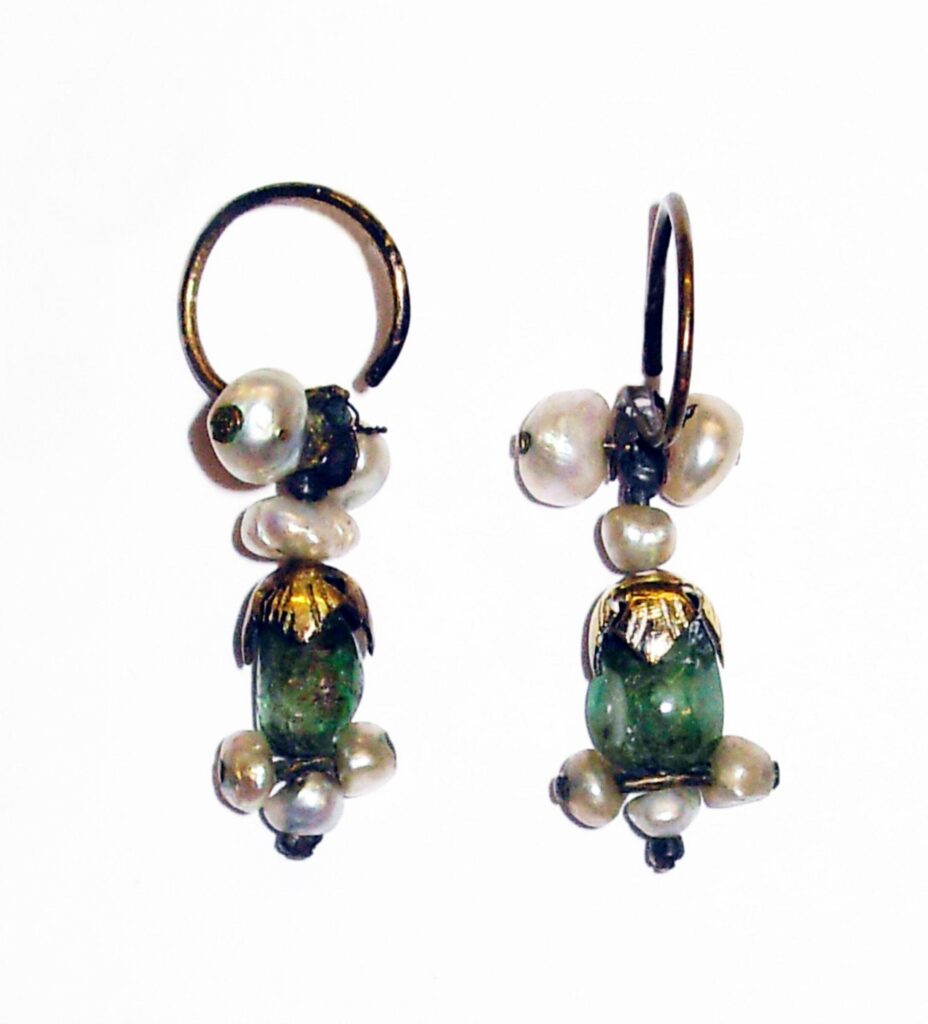
V&A Museum
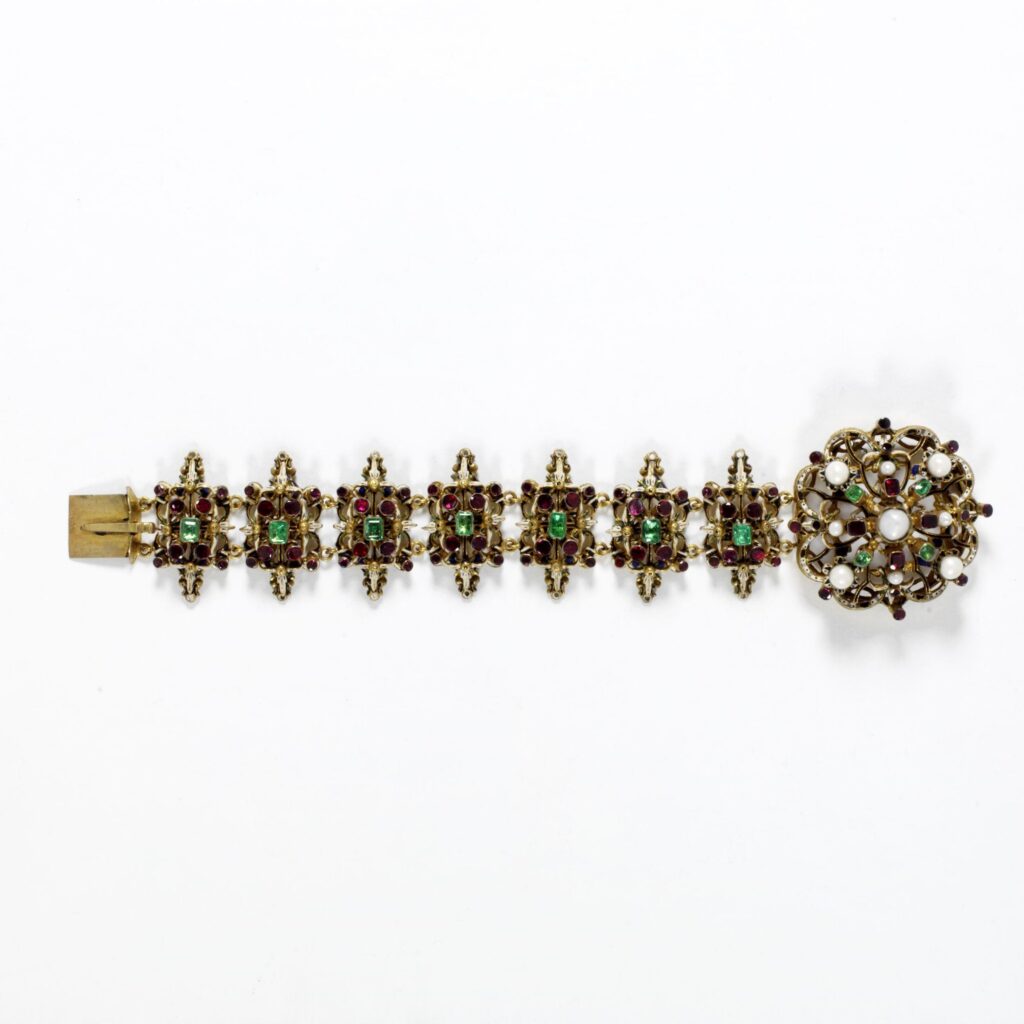
Other green accessories
Surprisingly, despite the caution again wearing too close to the face in order to best-compliment one’s complexion, I have seen many examples of green parasols through my time writing for Recollections.

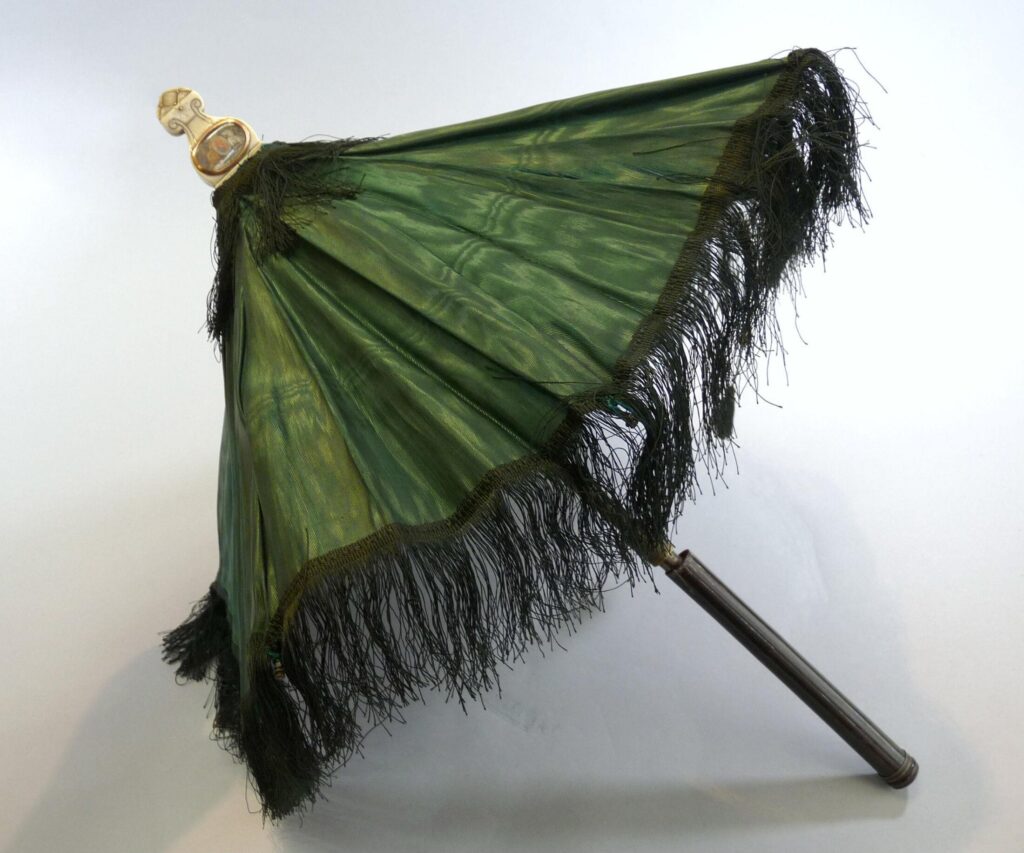
I also found examples of green shoes. It should be noted that the appropriate color for shoes has rarely come up in my research using 19th century fashion manuals.
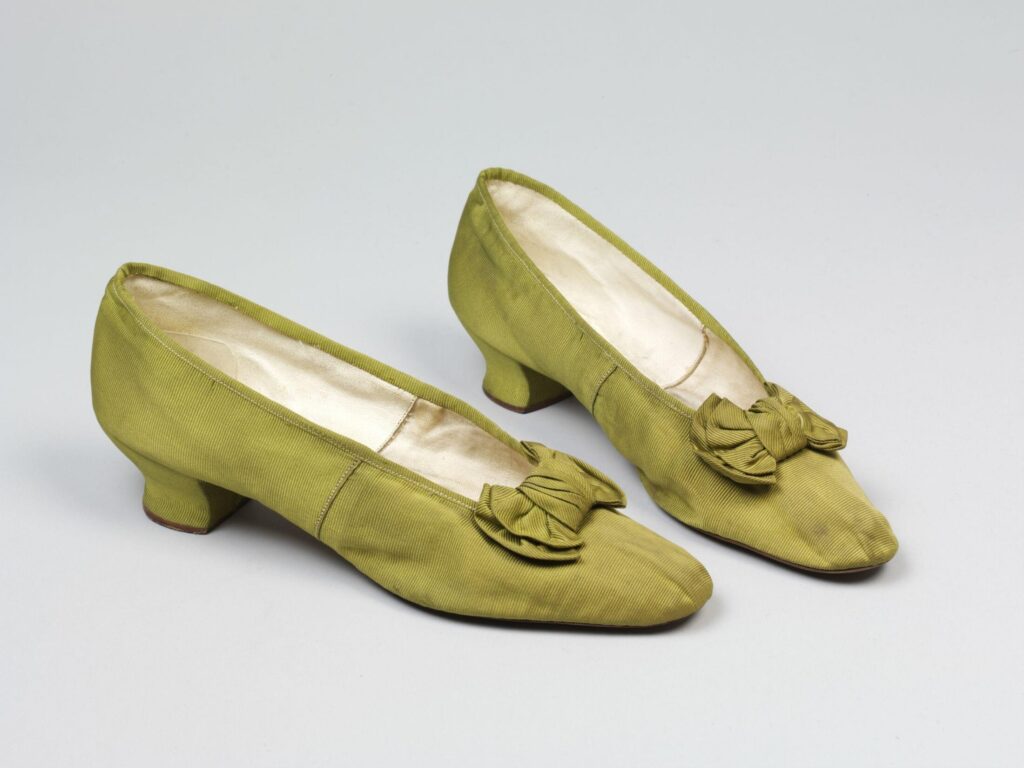
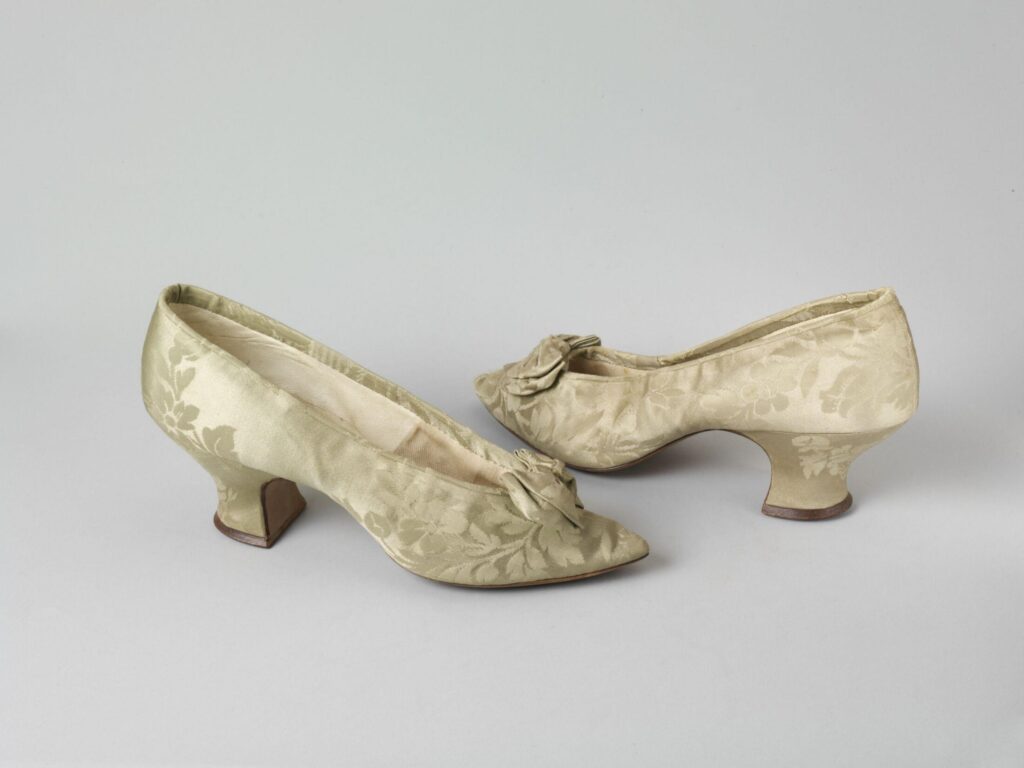
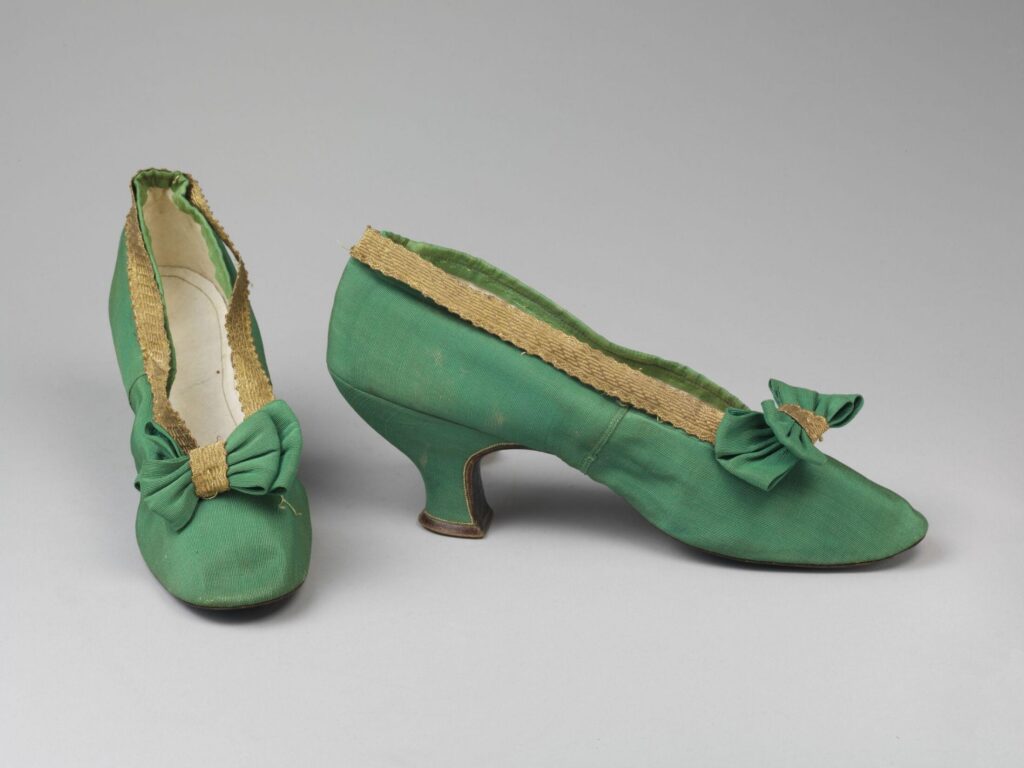
Popular poison
I would be remiss to leave out green clothing and the use of arsenic to create dyes for fabric. Rapid innovation created the availability of shades in green not previously available, as it had been achieved by combining blue and yellow before arsenic was discovered to be effective.
It was a chemist by the name of Karl Scheele who figured out how to make green dye using cooper copper arsenite. He invented the dye in Sweeden in 1778 and it would become known as Scheele’s green.
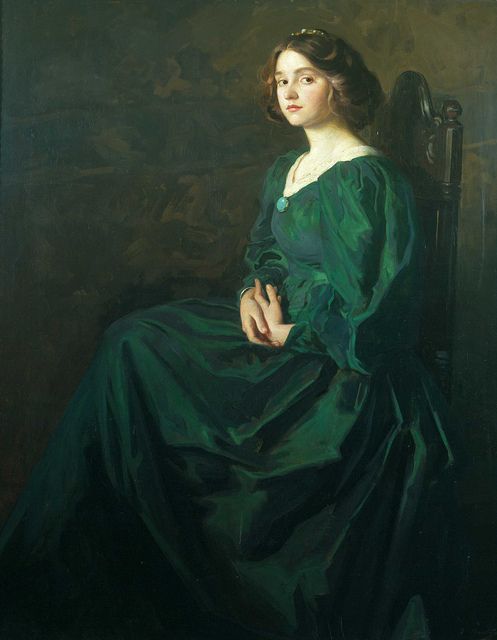
By the Victorian era, Scheele’s green was a widely popular color for interior design, especially for wallpaper and upholstery. Here and there, it was also used for winter dresses and cloaks.
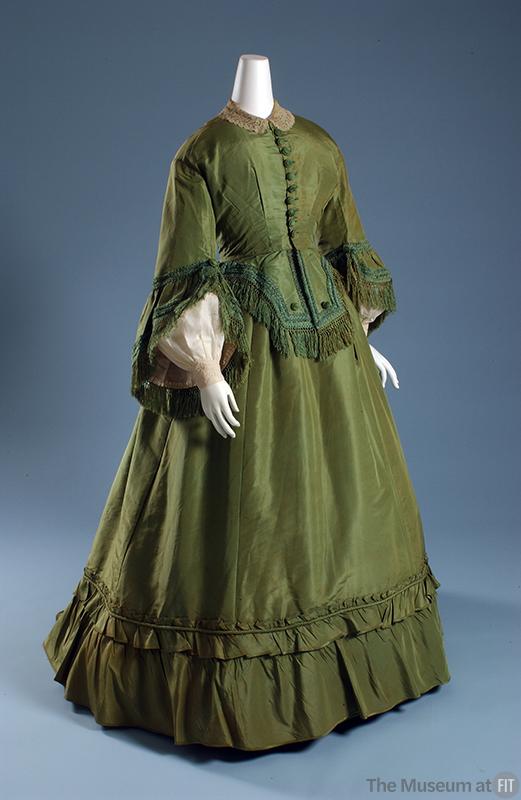
By the 1890s it was believed that Scheele’s green was responsible for illnesses that those exposed experienced. Symptoms ranged from scabs forming on the skin of those wearing it, hair loss, vomiting, and in extreme cases the kidneys shutting down, leading to death.
The illnesses and deaths affected individuals ranging from infants who were exposed to dyed carpets, milliners using the dye to color flowers, women wearing green dresses, the homebound, and more. Getting an accurate number of deaths is challenging, however, as many of those who were inflicted were unaware of the cause of their misery.
Did you learn something new about the use of green in the Victorian era? Stay tuned for my next post on purple.
What color would you like me to explore? Let me know in the comments.

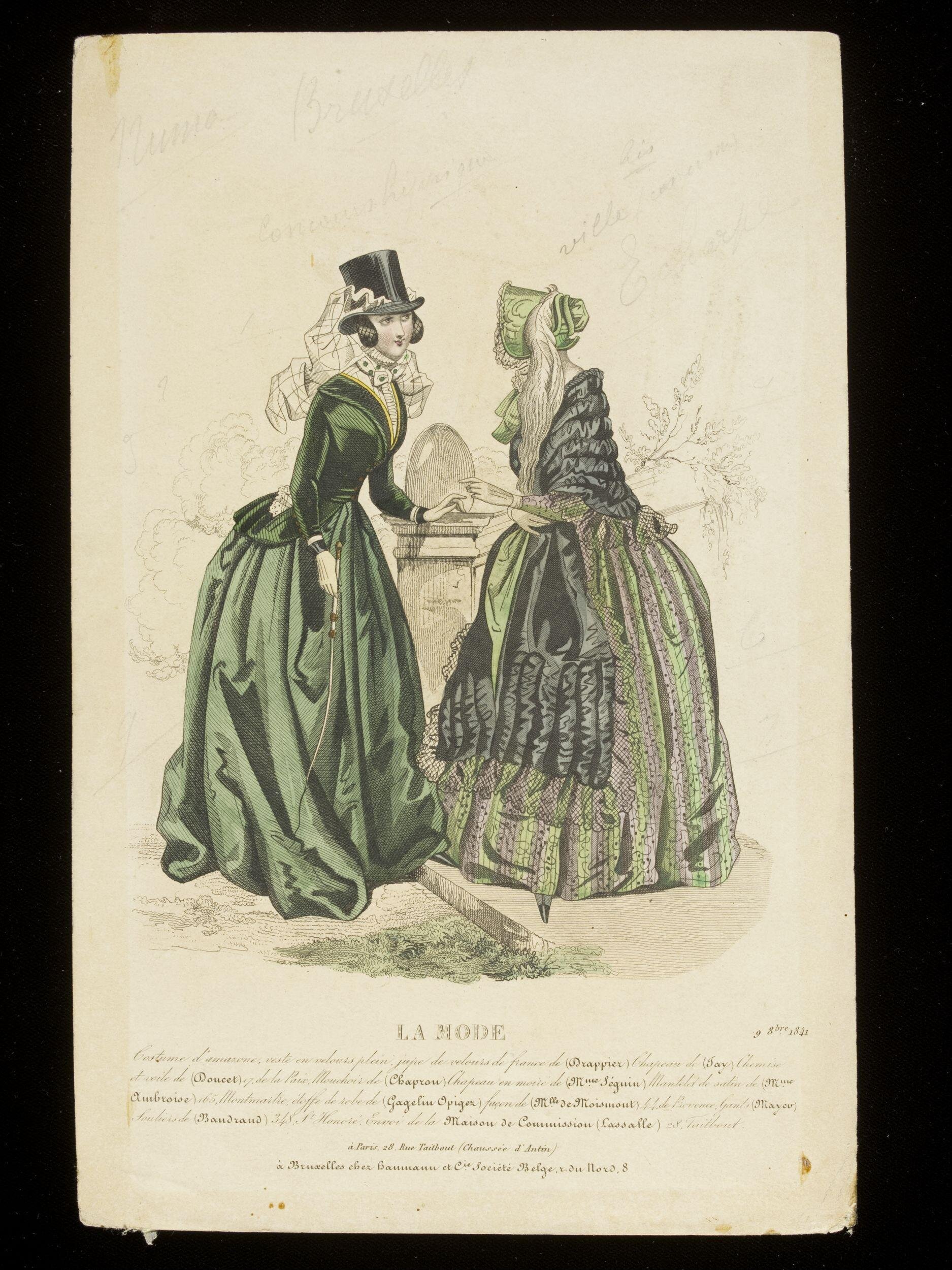


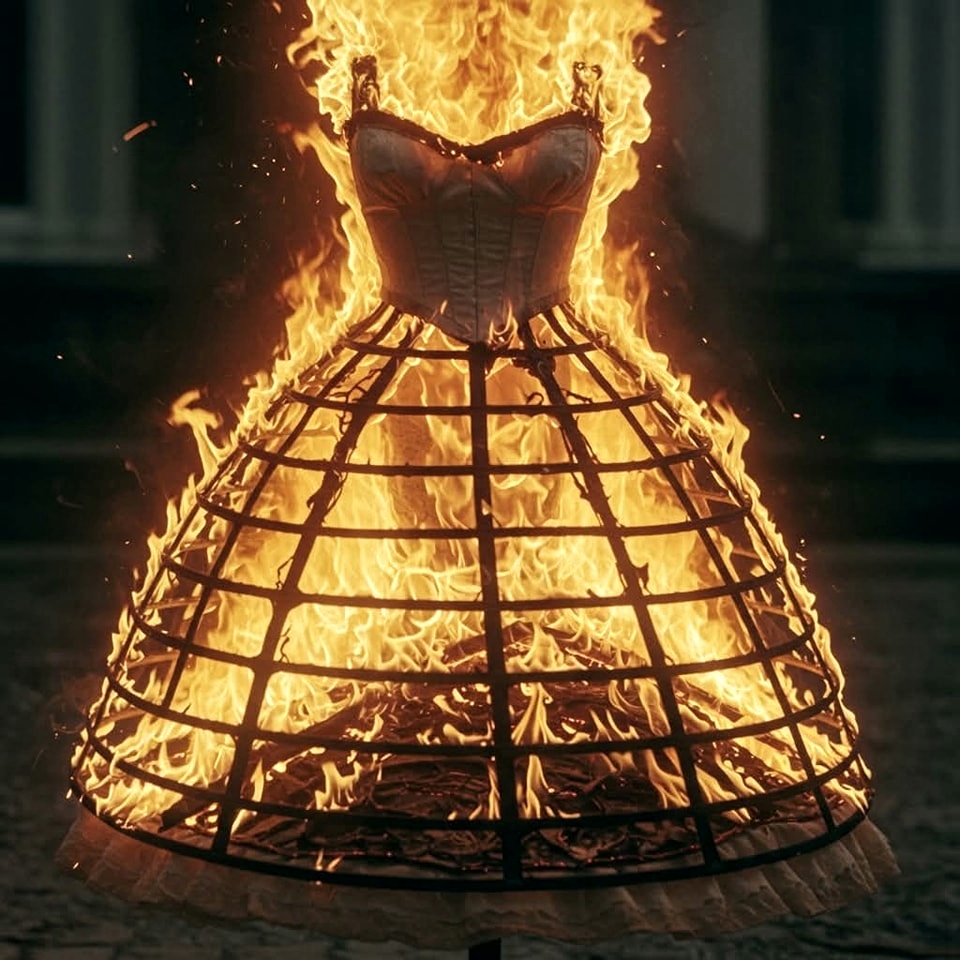



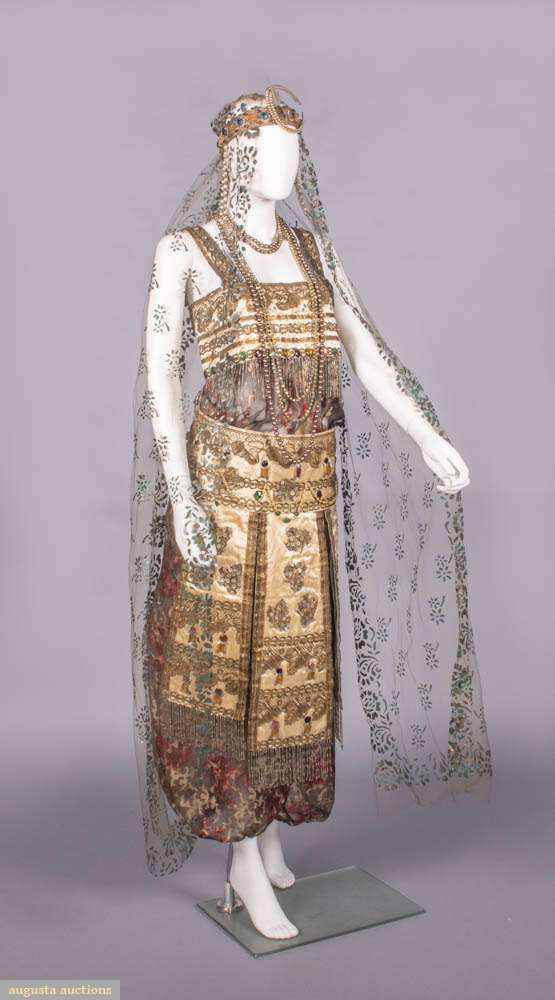





Hi Janice; I truly enjoy reading your interesting writings… I give lots of Fashion Shows with my Historical Costume Club and I am asked this question a lot… how many clothes/dresses did the average Victorian Woman own … I personally grew up in a old Victorian home and we asked our Mother why were the closets so darn small and her reply was the people of the times didn’t own as much clothes as we do in these modern times…! Maybe a better T of history on this for a future writing…?
Thank you, Jackie Craig
I’d like to know more about indigo and the plant used to make the color.